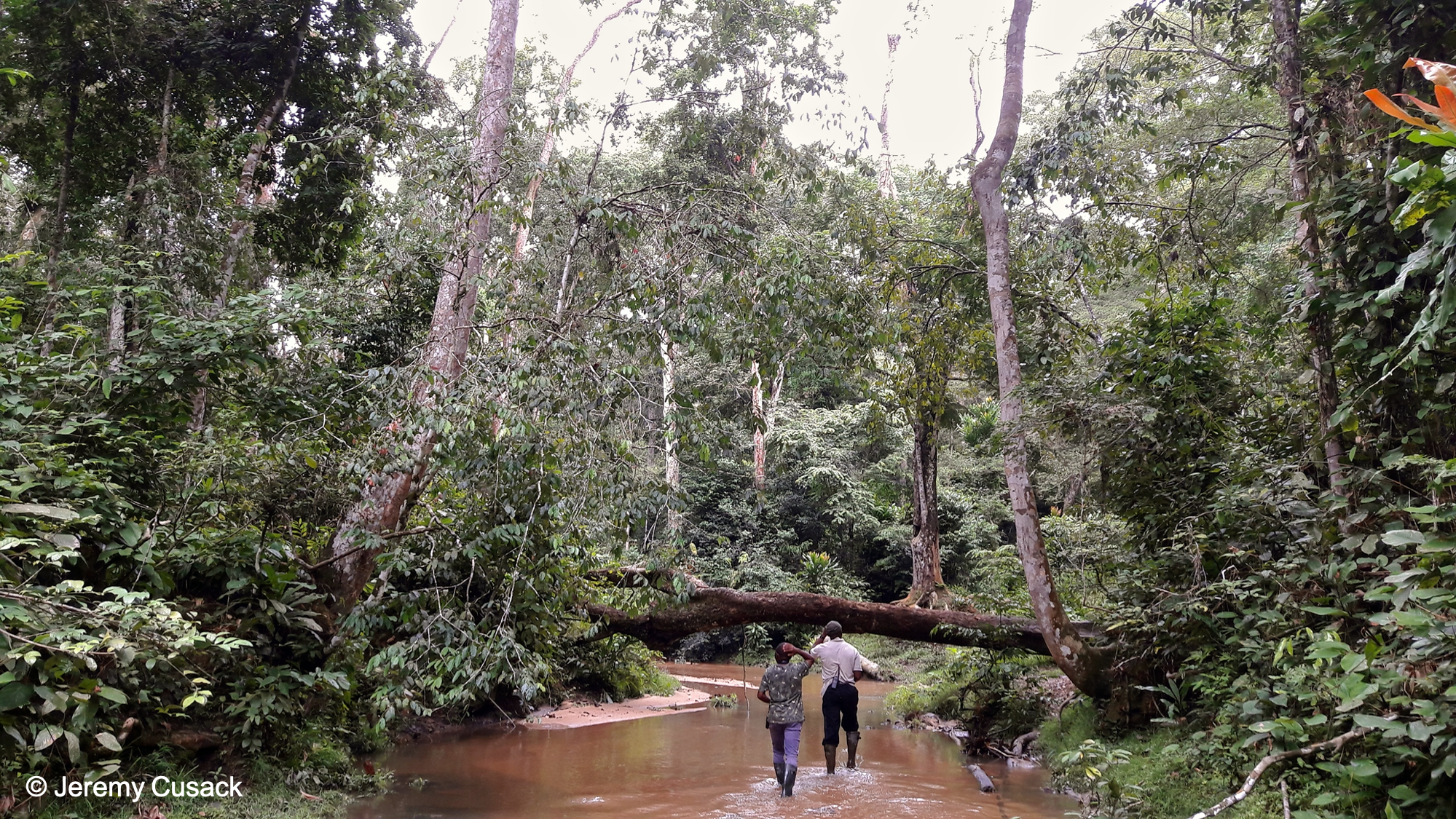Long-term Ecological Monitoring at Lopé NP, Gabon
Lopé National Park is located in the heart of Gabon, a heavily forested country bordering the Atlantic Ocean in western equatorial Africa. The Lopé landscape is a mosaic of savanna and forest ecosystems and is host to many fasinating plant and animal species, including humungous Moabi trees, the endemic species Cola lizae, and of course chimpanzees, gorillas, forest elephants and vast hordes of mandrills among many others. There is also a really rich human history with evidence of human settlement stretching over 400,000 years.

Ecologists have been studying the Lopé fauna and flora continuously since the early 1980s when a permanent research station (Station d’Études des Chimpanzées et des Gorilles, SEGC) was established. The original focus of the research was the ecology of the great apes that coexist at the site and the seasonal availability of their resources. Lopé researchers began to make monthly observations of individual-plant phenology (leafing, flowering and fruiting) in 1984 and this study has been run continuously ever since, incorporating more than 2000 individual plants of more than 80 species over three decades.

Long-term data on plant life cycling is extremely rare in the tropics and the Lopé dataset is matched by only one other site (BCI in Panama). Phenology data hold unique value to understand the dynamics of tropical forest ecosystems, the impacts of global environmental change and the role of tropical forests in global climatic and atmospheric processes. Plant phenology also underpins the availability of resources for animals and people. Seven of the plant species studied at Lopé NP are recognised as important indigenous fruit trees because they provide non-timber forest products (NTFPs) traditionally used by Gabonese people for cooking, medicine and cultural activities.

I joined the Lopé research team in 2014 when I began my PhD at the University of Stirling (part-funded by Gabon’s National Parks Agency and supervised by Prof Nils Bunnefeld and Prof Katharine Abernethy). The aims of my thesis were to describe the cyclicity and seasonality of plant phenology at this study site in western equatorial Africa and - now that the dataset is more than three decades long - analyse interannual variability and long-term changes in plant function associated with environmental change.
During this time I developed new analytical techniques for tropical phenology research (Bush et al., 2017, Bush et al., 2018), co-authored the first cross-site analysis of tropical tree flowering and fruiting cycles in Africa (Adamescu et al. 2018), analysed the seasonal, inter-annual and long-term climate at the site (Bush et al. 2020) and showed a dramatic collapse in long-term fruit availability with knock-on effects for frugivorous megafauna (Bush et al., 2020).
My role in the Lopé research team mostly involves managing the data from the long-term phenology and weather programs (cleaning and digitising historic records, monitoring the quality of and archiving ongoing data collection, refining field methods and publishing datasets in public repositories), leading on new analyses and connecting the long-term ecological research to national and international policy. While I am based in Scotland, I have been incredibly privileged to join the Lopé team on a number of field visits over the years and am in awe of this incredible ecosystem, the species found there and my colleagues who have dedicated years of careful observation to learn more about it.

